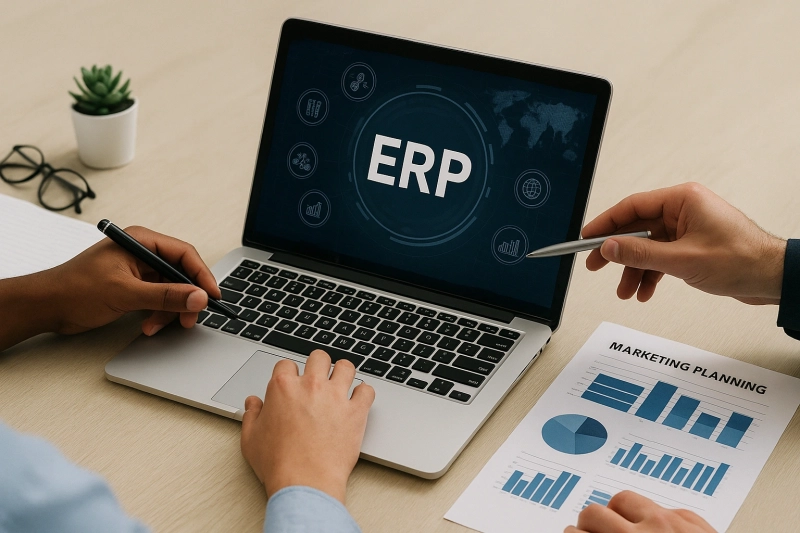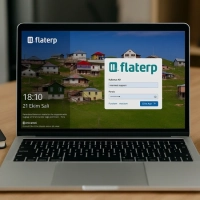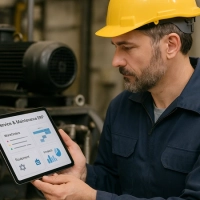
- 1. Analyze Current Processes and Set Clear Goals
- 2. Create a Project Plan and Roadmap
- 3. Strengthen the Data Preparation and Migration Process
- 4. Choose the Right ERP and Module
- 5. Invest in User Education and Change Management
- 6. Don't Skip the Pilot and Testing Processes
- 7. Post-Go-Live Support and Continuous Improvement
- Result: Sustainable Success with a Planned Transition
The ERP (Enterprise Resource Planning) system offers critical advantages such as efficiency, cost control and fast decision-making by gathering all business processes of companies on a single platform.
However, the way to achieve the expected value from ERP is not only through choosing good software; meticulous planning and management of the transition process is equally important.
Flaterp's experience across many industries shows that a transition carried out with the right steps provides companies with operational flexibility and sustainable profitability in a short time.
So, what steps are critical for a successful ERP migration?
1. Analyze Current Processes and Set Clear Goals
The first step before starting an ERP project is to thoroughly analyze existing business processes . Which departments are experiencing what challenges? Which processes are in most urgent need of digitalization?
This analysis not only helps you select the right modules but also clarifies the success criteria to be measured at the end of the project. For example, measurable goals should be set, such as increasing inventory turnover, reducing costs by 15%, or halving reporting time.
2. Create a Project Plan and Roadmap
ERP migration requires multi-phase, disciplined project management . A clear roadmap includes a clear timeline, budget, human resources, and responsibilities.
Flaterp creates a detailed deployment and migration schedule for each client at the outset of the project. This schedule covers every phase, including analysis, data cleansing, testing environment, training, and go-live. This prevents unexpected delays and keeps all teams informed of the progress.
3. Strengthen the Data Preparation and Migration Process
The success of an ERP system depends on the data it imports being accurate and up-to-date . Therefore, before going live:
- Erroneous, incomplete or duplicate data should be eliminated,
- Formats compatible with the new system should be used,
- Potential problems with test transfer should be anticipated.
Flaterp's powerful data migration tools and expert team enable companies to move their data to the new platform safely and quickly .
4. Choose the Right ERP and Module
Choosing the ERP solution that best suits your business needs is critical for a successful transition.
Flaterp's cloud-based and modular structure allows flexible use of modules such as finance, inventory, production, human resources, sales and CRM according to need.
Thanks to the cloud infrastructure:
- All data is managed from a single point and in real time,
- Geographically different locations are monitored from a single center,
- Backup and security processes are automated.
5. Invest in User Education and Change Management
No matter how powerful the ERP software is, untrained users reduce the efficiency of the system .
Flaterp helps teams quickly adapt to the new system by providing department-based hands-on training, detailed user guides, and ongoing support.
Additionally, it is important to include all employees in the project process, select super users, and keep internal communication strong to reduce possible resistance to change.
6. Don't Skip the Pilot and Testing Processes
Rolling out the system across the entire company at once is risky.
First, a pilot application should be carried out in a specific department and all modules should be tested with real scenarios.
Flaterp's testing and reporting tools ensure that errors are detected early and processes are perfected before going live.
7. Post-Go-Live Support and Continuous Improvement
ERP migration does not end with the go-live moment.
Continuous support and performance monitoring are required for sustainable success.
Flaterp's technical team ensures uninterrupted and efficient operation of businesses with update, backup, user support and process optimization services.
Result: Sustainable Success with a Planned Transition
Switching to an ERP system is a strategic step in companies' digital transformation journey.
With proper planning, robust data migration, user training, and ongoing support, this process ceases to be a risk and becomes a driving force for growth and efficiency.
Flaterp ERP makes the ERP transition of businesses faster, safer and more profitable with its modular structure and expert consultant team.
























